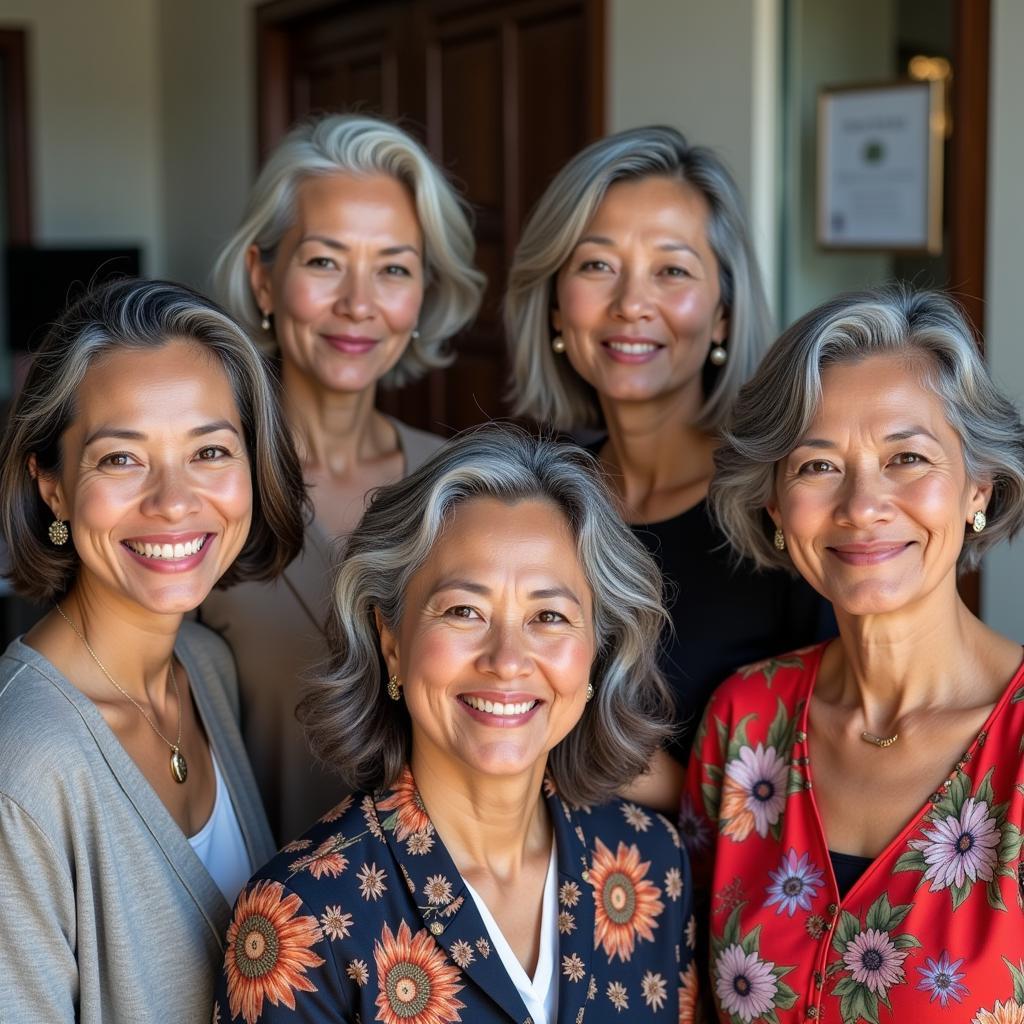Grey hair is often seen as a sign of aging, and in many cultures, it’s something people try to hide. But in Southeast Asia, there’s a growing movement to embrace grey hair, especially among women. This shift in perspective is influenced by a mix of cultural traditions, modern beauty standards, and the desire to challenge societal norms.
Traditional Beliefs and the Beauty of Age
In several Southeast Asian cultures, grey hair is traditionally viewed with respect. It’s associated with wisdom, experience, and a life well-lived. Elders with silver strands are often seen as pillars of the community, their advice sought after and cherished. This deep-rooted respect for elders can be seen in the way younger generations interact with them, often showing deference and seeking their blessings.
 Elders with grey hair in Southeast Asia
Elders with grey hair in Southeast Asia
For instance, in Vietnamese culture, the term for grey hair, “tóc bạc,” also translates to “silver hair.” This linguistic connection highlights the value placed on the natural aging process. Similarly, in Thai culture, the elderly are highly respected, and their grey hair is seen as a symbol of their accumulated knowledge and life experiences.
Modern Influences and Redefining Beauty
While traditional values play a role, the rise of social media and globalization has also influenced how people in Southeast Asia view grey hair. Increasingly, women are choosing to embrace their natural hair color as a statement of empowerment and authenticity. They’re challenging the notion that beauty is solely defined by youthfulness.
 Southeast Asian women confidently showing off their grey hair
Southeast Asian women confidently showing off their grey hair
Influencers and celebrities in the region are also playing a part in this movement. By proudly displaying their grey hair, they’re inspiring others to do the same. This visibility helps normalize grey hair and encourages people to see it not as something to hide but as a unique and beautiful characteristic.
The Practical Side: Cost and Convenience
Beyond cultural shifts and changing beauty standards, practical considerations also factor into the decision to embrace grey hair. Hair dyeing can be expensive and time-consuming, especially for those who need regular touch-ups. By ditching the dye, people free up time and resources for other things they’re passionate about.
“Many of my clients who choose to go grey tell me it’s liberating,” says Maya, a hairstylist in Kuala Lumpur. “They’re tired of the constant upkeep and the pressure to conform to unrealistic beauty ideals. Embracing their natural hair color is a way to simplify their lives and focus on what truly matters.”
 A woman getting her grey hair styled in a salon
A woman getting her grey hair styled in a salon
Asean Media: Celebrating Diversity and Individuality
The growing acceptance of grey hair in Southeast Asia reflects a broader trend of embracing diversity and individuality. Asean Media celebrates this shift by showcasing the unique stories and perspectives of people across the region. We believe that true beauty lies in embracing our authentic selves, regardless of age, background, or hair color.
This movement is not about dictating a single standard of beauty but rather about expanding the definition of what’s considered beautiful. It’s about giving people the freedom to choose how they want to age and express themselves. And in a world often obsessed with youth, that’s a powerful message.

